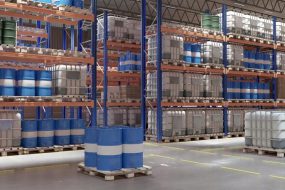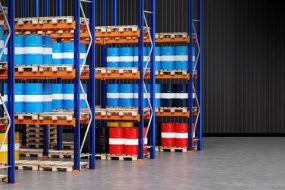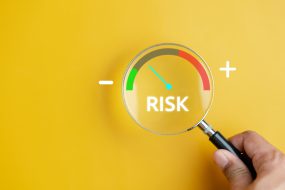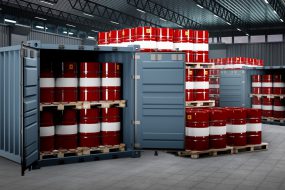Navigating the complex and stringent regulations surrounding shipping hazardous goods internationally is daunting for many businesses. The intricacies ofdangerous goods international shipping, particularly chemical shipping, require meticulous attention to detail and a comprehensive understanding of global regulatory frameworks. This article will provide a strategic overview of how to effectively ship hazardous materials internationally, emphasising the importance of compliance, innovation, and efficiency.
Understanding hazardous goods and regulatory frameworks
To begin, it is essential to understand what defines hazardous materials. These substances pose potential risks to health, safety, property, or the environment. They are categorised into nine primary classes, including explosives and radioactive materials.
Regulatory bodies and compliance
Numerous regulations and standards oversee the international shipping of hazardous materials. The primary regulatory bodies include:
- International Air Transport Association (IATA): Oversees the transport of dangerous goods by air.
- International Maritime Organization (IMO): Regulates the shipping of hazardous materials by sea.
- United Nations Economic Commission for Europe (UNECE): Facilitates the transport of dangerous goods by road.
Compliance with these regulations is non-negotiable. Failure to adhere can result in severe penalties, including fines, shipment delays, and reputational damage.
Related reading: Unveiling the secrets: Best practices for shipping dangerous goods
The shipping process: Key steps and considerations
Classification and identification
The first step in the shipping process is accurately classifying and identifying the hazardous material. This involves determining the correct classification under the UN Model Regulations, which are harmonised across different modes of transport. Each hazardous material is assigned a UN number and proper shipping name, which must be used consistently in all documentation.
Packaging requirements
Packaging plays a crucial role in ensuring the safe transport of hazardous materials. The packaging must be robust and capable of withstanding the rigours of international transport. The UN Model Regulations specify performance-oriented standards for packaging, which include:
- Type of packaging: Drums, boxes, and cylinders are common types.
- Packaging groups: Based on the level of danger, ranging from I (high danger) to III (low danger).
- Performance testing: Includes tests for drop, leakage protection, and stacking.
Documentation
Accurate documentation is critical in the shipping process. Key documents include:
- Dangerous goods declaration (DGD): Certifies that the shipment complies with international regulations.
- Safety data sheets (SDS): Provide detailed information on the material’s properties and handling precautions.
- Transport emergency card: Offers guidance on emergency procedures in case of an incident.
Labelling and marking
Proper labelling and marking are essential for identifying and safely handling hazardous materials. This includes:
- Hazard labels: Indicate the specific type of hazard.
- Handling labels: Provide instructions for safe handling.
- Markings: Include the UN number and proper shipping name.
Transportation and logistics
Choosing the appropriate mode of transport—air, sea, or land—is a critical decision influenced by cost, speed, and the nature of the hazardous material.Multimodal transportationoften offers a balanced approach, optimising the logistics network for efficiency and cost-effectiveness.
Related reading: Dangerous goods and international rules: What you need to know
Innovations in hazardous materials shipping
Technology integration
Integrating technology into logistics processes is transforming the shipping of hazardous materials. Innovations such as blockchain technology are enhancing transparency and traceability, ensuring compliance and efficiency in the supply chain.
Blockchain provides a decentralised ledger that records every transaction, creating a tamper-proof shipment journey record. This level of transparency is invaluable in verifying compliance and streamlining audits.
Multimodal transportation
Multimodal transportation leverages the strengths of different transport modes, reducing costs and improving efficiency. This approach can mitigate risks for hazardous materials by optimising routes and minimising transit times.
Circular economy and sustainability
As businesses strive for sustainability, the circular economy presents an opportunity to reduce waste and improve resource efficiency. Hazardous materials shipping could involve reusing or recycling packaging materials and implementing return logistics for empty containers.
Challenges and opportunities
Regulatory challenges
The ever-evolving regulatory landscape presents ongoing challenges for businesses. Staying informed and adaptable is crucial to maintaining compliance and avoiding costly disruptions.
Opportunities for growth
Despite the challenges, the global market for hazardous materials shipping presents significant opportunities for growth. By investing in technology and adopting innovative business models, companies can enhance their competitive edge and capitalise on emerging trends.
Key takeaway
Shipping hazardous materials internationallyis a complex but manageable process. By understanding the regulatory landscape, implementing best practices, and embracing innovation, businesses can navigate these challenges and seize opportunities in the global market. In an era where adaptability and efficiency are paramount, integrating technology and innovative business models into logistics processes is not just advantageous—it is essential. As the international shipping landscape evolves, those prepared to adapt will thrive.
Ensure safety and compliance.Get in touchfor expert hazardous materials logistics!




